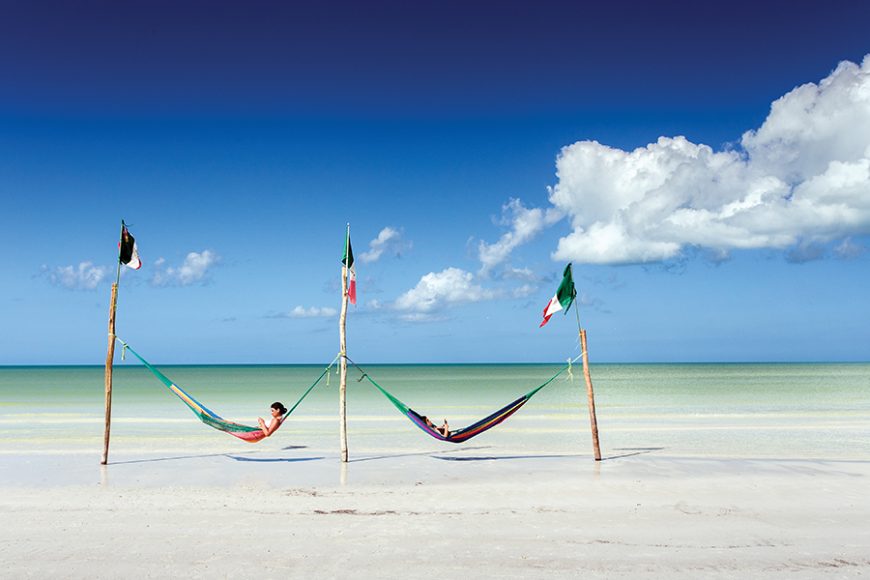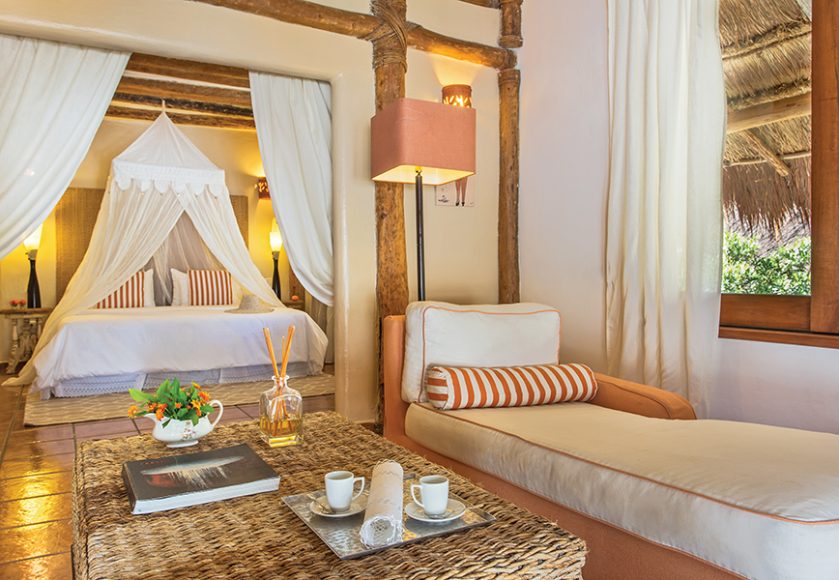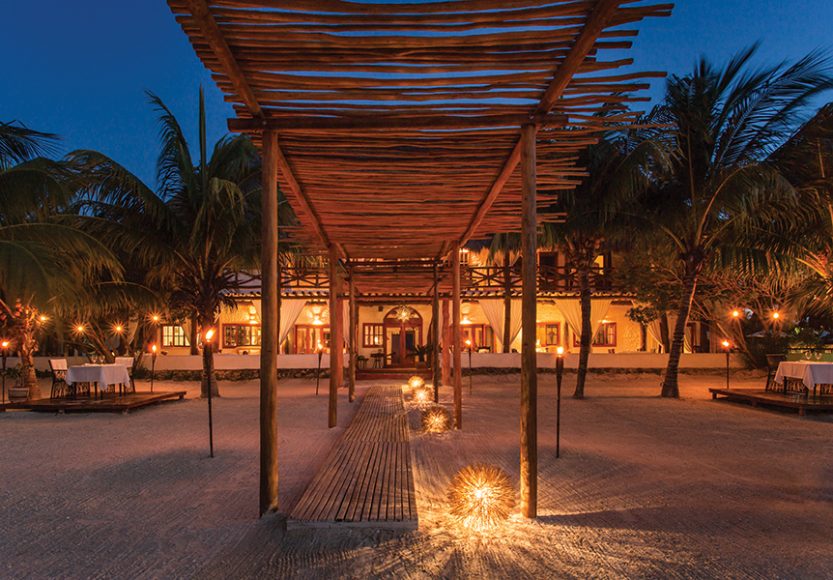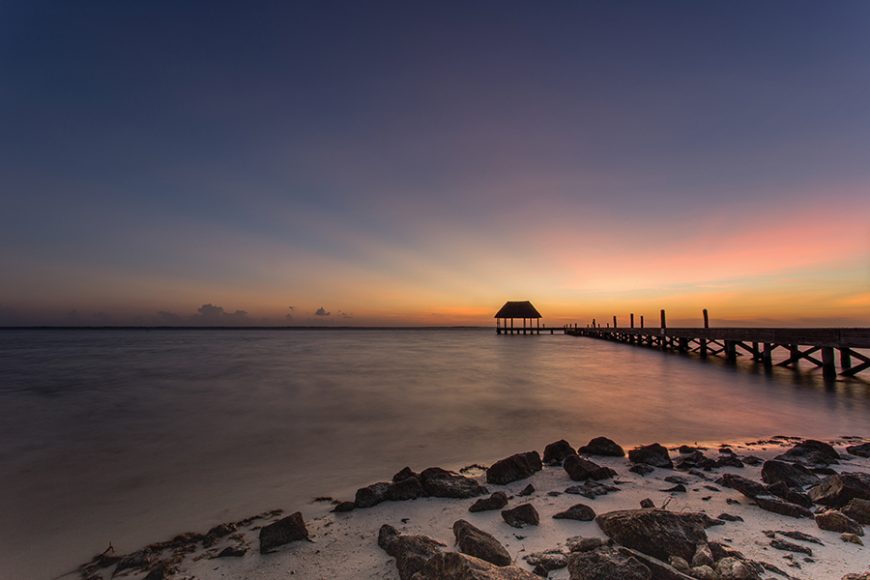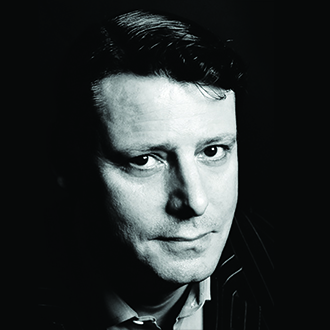Size, as we know, or should know, doesn’t really matter, but there’s something faintly reassuring that the sign that my greeter, Eduardo, is holding and which bears my name, is by far the biggest in the sea of signs and placards outside arrivals at Cancún International Airport.
“Welcome to Yucatán,” Eduardo says as he whisks me into the air-conditioned comfort of the smart shuttle bus waiting nearby. Four minutes later, we swing into the private terminal at the northwest end of the airfield and, just moments after, I’m installed in a Cessna, barely bigger than a grasshopper, with Francisco, my pilot, at the wheel, weaving between the big jets and onto the runway. In a jiffy, just like that, we’re airborne.
Goodbye urban sprawl, goodbye overcrowded beaches, goodbye Cancún. Time seems suspended up here in the Dodger-blue afternoon sky, flying across what’s left of the Yucatán tropical forest, out to the island. But a mere 25 minutes later, we are coming in to land. Hello, sandy landing strip littered with palm fronds. We bob along the sandy strip like a pingpong ball skittering across the floor, coming to a guttural stop on a patch of grassy green. Welcome to Isla Holbox (say it Oll-BOTCH), where the Gulf of Mexico meets the limpid, warm waters of the Caribbean. Kamila and Heber from CasaSandra are waiting for me with an ice-cold face flannel and the golf cart (there’s no other motorized transport on the island) and, in no time flat, we’re riding the cart along Holbox’s ineffably pretty “main street,” past the island’s one ATM, toward the hotel.
If I could describe my perfect place in the sun, Holbox would be it. It’s small of scale, charming but not cute, as gentle on the eye as it is on the spirit. Its gravel streets are lined with shops that combine the practical with the entirely useless, and the shopkeepers are as laid-back as a five o’clock mojito, untroubled whether you choose to buy or not.
Of course, Holbox is not exactly undiscovered. Island aficionados have been coming here for yonks and an alternative jet set (call it a Cessna set) is well-established. Discerning backpackers make their way here in droves and yet somehow Holbox has retained its innocence, partly because it is difficult to get to. (The private air transfer from Cancún will set you back $1,000. Otherwise it’s a two-hour drive from Cancún to the tiny port of Chiquilá and a ferry across.) And partly because, mercifully, so far the developers have stayed away. Most important of all, despite a sprinkling of rustic bars and tequila shacks, there is no riotous party scene. Nature and the sheer beauty of the island are the reasons people come. Isla Hobox is the thinking man’s and woman’s Tulum.
On the other side of “town,” CasaSandra is the first hotel you come to. It’s also the loveliest in town, and, with only 18 rooms, feels more like someone’s home than a regular hotel. That, of course, is the point, and it’s hardly surprising, as CasaSandra started life 15 years ago as a private house, built by Cuban artist Sandra Pérez, who came to Holbox to find solitude and to work.
There is something of the visionary about Pérez, who embraced eco-tourism and sustainability before so many others leapt on the bandwagon. Natural materials and fibers like hemp, rattan and cotton are all around, and the hotel’s own branded Yucatán Herbal products — including, soap, body lotion and sun protection — are superb. Sleeping under a mosquito net in my exquisite ocean suite, using CasaSandra’s brilliant organic mosquito repellent, I did not get a single mosquito bite during my stay. On my first night I had the best night’s sleep I have had in a year and, by day two, severe lower back pain, which had been plaguing me for months, had all but disappeared.
In the small central area of the hotel, artworks, books, ceiling fans and beautiful lampshades abound. Such a great look. Steps away, on the hotel’s dreamy beach, they make refreshing CasaSandra cocktails, like smoothies, using chaya (the aromatic, spinach-like plant from the Yucatán Peninsula) and mint. Just add vodka or rum to taste. I could live on those, and, if I did, I reckon I’d live longer.
Do rise early for yoga by the pool, and do arrange a trip to swim with the whale sharks, the world’s largest extant fish species and as tame as your household pet. They are Holbox’s pride and joy. And you must take a boat out to the trio of islands, as I did. First Isla de la Pasíon, where you go to walk the trails, or climb the lookout for the views, or watch the pink flamingos do their own peculiar ballet on the sandbar. Next, Yalahau, to bathe in its natural cold spring. They say swimming here rejuvenates you and I for one believe it. Last but not least, speed across the water to Isla de las Pajaros, bird island, to see egrets, wood storks, pelicans and boat-billed herons gyrating, before alighting in the treetops. On the way back across the water the day I visited, I saw shoals of dolphin leaping in the late afternoon haze.
What else do you do in Holbox? Not much — and that’s the joy of it. Days quickly fall into a benign rhythm. Sunrise yoga followed by a breakfast of mango and pineapple, just-baked banana bread, with eggs and empanadillas for the hungry. Then mornings on the beach, 20 steps away, with a late lunch, a tiradito, say, under the palms at CasaSandra’s enchanting beach bar. After lunch, a siesta may beckon, between cool sheets. Then, as the shadows start to lengthen, margaritas on the beach or at Luuma, the prettiest bar in town. For dinner you’ll find me at Esencia, the hotel’s teeny-tiny restaurant, which looks magical at night, with its candlelight and soft music, and Chef Alonso’s perfectly executed dishes, ceviche, shrimp bisque and grilled mero (grouper) to name but three.
But incontrovertibly lovely as these things are, I’ve forgotten to mention Isla Holbox’s greatest asset, and that is the people who live and work here. Because even if you were to forget the serenity of CasaSandra (unlikely), or the beauty of the island (impossible), you could never, ever forget the warm and smiling Holbeños.

